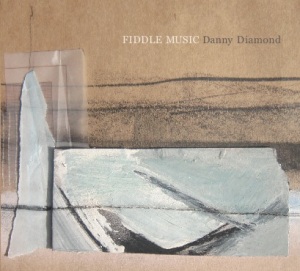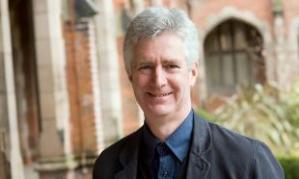One of the highlights of this year’s Willy Clancy Summer School was the talk given by Liam O’Connor on the life and collections of Patrick Weston Joyce (1827-1914 biography in Irish). Joyce was a polymath with a series of publications to his name, ranging in focus from studies of place names to Irish music and language, and even a history of Rome from its beginnings until 117 A.D. He held a number of prominent public positions, including principal of the (teacher) Training College, Dublin and serving as president of the Royal Society of Antiquaries of Ireland. Holding the latter position enabled him to prepare publications on Irish music, a real passion for Joyce, and one which he had engaged in from an early age. In 1909 he published a collection of 842 ‘hitherto unpublished’ airs entitled ‘Old Irish Folk Music and Songs‘, a collection which included excerpts from the work of William Forde and John Pigot some fifty years earlier.
One item or particular note which Liam raised during the talk was a tune entitled ‘The Races of Ballyhooly’. This stirring march, which was included on Liam’s duet CD with fellow Dub Seán McKeown (pipes), was written around 1830 to commemorate a massacre of anti-tithe protesters in Gortroe, Rathmcormac.
Watch and listen to a great performance of the tune from Peter Carberry and Padraig McGovern.
The tune follows the rather unusual melodic pattern of four repeated bars in the A part (for a total of 8), as well as having a mixture of quaver couplets that are rhythmically even (bar one), dotted on the first note (bar two) and dotted on the second note in the Scottish style (bar 3). The A part’s purposeful opening theme drifts back unexpectedly in bar 7, suggesting an abridgement from a longer form of the part that may have contained 16 bars as many older airs do. However, no older sources appear to be available to prove or disprove this theory.
‘The Races of Ballyhooly’ as transcribed by Joyce:

‘From memory, as learned in my young days. The Irish song that gave name to this fine air-of which I heard fragments in my youth-commemorated the fate of a number of peasants who were shot down in the neighbourhood of Ballyhooly near Fermoy Co.Cork, while resisting the collections of tithes, early in the last century (about 1825). The poet utters a prophecy, which has come to pass, that the particular church for which these tithes were assessed would be levelled, till not one stone remained on another.
I have a copy of the whole song written in English letters phonetically; but it is such gibberish that I can make nothing of it. The first line however is plain enough:- Tá sgeul agum an innsinnt s’ná smuainim gur breug é: “I have a tale to tell, and I don’t think it’s a false one.”‘
Additional information from Donal O’Sullivan, Songs of the Irish (Cork: Mercier, 1981 – first edition 1960):
RÁISEANNA BHAILE ÁTHA ÚLA
Tá scéal agam le hinnsint is ná smaoinidh gur bréag é,
Cé gur fada táimid síos aige síolrach na méirleach
Beidh prócadóirí Gallda go fannlag gan éifeacht
Gan chlú, gan mheas, gan séan, gan rath, gan bia, gan deoch, gan éadach.
Preabhaidh in bhur seasamh is árduídh bhur n-inntinn,
Tá an deachú leis a’ bhfán is gan fail chasta choíche air,
Ruaigfimid na h-Órangemen ‘gus déanfaimid a ndíbirt;
Beidh ministry fé bhrón is a ndóirse aca dúnta –
‘S ba bhinne leat an lá úd ná Ráiseanna Bh’l Áth’ Úla
Ar an nGort Rua do thuit ár gcómharsain le h-órduithe láimhte,
Beidh Ríocht gheal na Glóire go deo aca mar árus;
Beidh Dia mór na gCómhacht ann i gcóir go fuíom sásamh,
Go gcrochtar iad le córda nó go ndóitear ‘n-a gcnámhnaibh.
Má thigid na sméirligh saor abhaile ón gcúis seo,
Beifar ‘n-a gcóir fós, mo bhrón-sa! Lá an Chúntais;
Beidh fuil na bhfiréan idir an soéir is a súile,
Beidh an dial is a ghárda dá n-árdach chun siúil leis –
‘S ba bhinne leat an lá úd ná Ráiseanna Bh’l Áth’ Úla
Le trí chéad bliain d’fhág Séamus bréan ár n-aigne go buartha,
Fé bhrón, fé smacht, gan choir, gan cheart,
Ach allus le n-ár ngruanaibh,
ár n-Eaglais a’ léamh Aifrinn le h-anaither i ngleanntaibh,
‘S a dtréada ‘dul ar strae aca gach éan[aon]-mhaidin Domhnaigh,
Anois tá eagla ar chách gur i lár do bheidh i dteampuill,
Tá prapaí fé sna fallaí aca le h-anaither ‘s le sgannra.
Beidh gach cloch is reacht aca caite thar a chéile
Beidh minstrí ar lár is a gcnámha briste brúite
‘S ba bhinne leat an lá úd ná Ráiseanna Bh’l Áth’ Úla
THE RACES OF BALLYHOOLEY
Literal translation
1. I have a story to tell, and do not think it is a lie, That although we are long oppressed by the race of plunderes The foreing proctors will be forspent and powerless, Their standing and reputation gone, luckless and unfortunate, lacking food and drink and clothing. Spring to your feet and lift up your hearts, The tithes are overthrown without prospect of ever returning. We shall rout the Orangemen and achieve their expulsion, The ministers will be in tribulation, with their doors closed – And that day will be sweeter to you than the Races of Ballyhooly!
2. At Gortroe our neighbours fell by orders to shoot, the bright Kingdom of Glory will be their abode for ever. The great God almighty will be there to grant us retribution, That they may be hanged by a rope or burnt to the bone. If the villains come unscathed from this ordeal, They will yet be dealt with, my grief! On the Day of Judgement, The blood of the faithful will be between heaven and their sight. The devil and his minions will carry them off with him – And that day will be sweeter to you than the Races of Ballyhooly!
3. For three hundred years dirty James (John Bull) left our minds troubled, Sorrowful and bullied, without justice or rights, but with sweat on our cheeks, Our clergy saying Mass affrighted in the valleys, And their flocks going astray from them on each Sunday morning. Now they are all in terror that their churches will be levelled, They have put props under the walls in their fear and alarm. Every single stone and ordinance of theirs shall be overturned, The ministers will be laid low, their bones bruised and broken – And that day will be sweeter to you than the Races of Ballyhooly!
Poetic translation
A story I’ve to tell you, friends, and ’tis no false relation,
‘Tis all about the thieving fiends that long oppressed this nation.
The proctors and their heresies will shortly be sent packing,
Their creed and doctrines all proved lies, their wines and victuals lacking.
For my news is this great matter, boys, for which your hearts are yearning,
The tithes we soon will scatter, without hope of their returning,
The Orangemen we’ll batter, all their pleas for mercy spurning.
The ministers will lose what’s theirs, their doors shut in their faces,
Be sure that day will be far more gay than the Ballyhooly races!
‘Twas at Gortroe our neighbours died through shooting fell and gory,
The gates of heaven are opened wide to welcome them to glory.
Almightly God will not forget these men, for all their boasting,
On the gallows tree we’ll see them yet, or in a furnace roasting.
If fire and gibbet they can cheat, for them there’s no repentance,
They still must face the Judgement Seat and hear the dreadful sentence,
Our martyrs will their pleas defeat, they’ll all of them be sent hence.
The devil then will seize these men and put them through their paces –
Be sure the day will be far more gay than the Ballyhooly Races!
Three centuries the foreign race has ground us ‘neath the harrow;
The sweat aye running down our face in travail and in sorrow;
Our priests, proscribed, were forced to say their Mass in secret hollow,
Each Sunday and each holy-day, alas! where few could follow.
But the foreigners will tremble soon, their downfall is beginning,
They’ll see their churches crumble soon, in spite of under-pinning,
Each stone of them will tumble soon, their steeples all sent spinning.
We’ll finish with the ministers, of their work we’ll leave no traces –
Be sure that day will be far more gay than the Ballyhooly races!
This is an anti-tithes song dating from about 1830. At the time, everybody had to pay tithes to the established church.The tithes were rigidly enforced, as O’Sullivan relates: ”In Skibbereen, for instance, the parson though he knew that the stricken people were living on seaweed and nettles, insisted on his tithes with an escort of police and yeomanry. The Catholics resisted and thirty of them were shot dead.”
Daniel O’Connell lead a passive resistance campaign against the tithes; ”when cattle, crops, furniture were seized by the proctors and offered at public auction, nobody would buy. The agitation persisted in spite of the savage Coercion Act of 1833, which gave power to prohibit meetings, to put districts under martial law and to impose a curfew; and it ended successfully with the passage in 1838 of an Act abolishing the tithe rent charge.”
The second verse of the song refers to Gortroe, where ‘the massacre of Rathcormac’ occurred on 18 Dec 1834 (Gortroe and Rathcormac are near Fermoy, Co Cork), when Rev Archdeacon William Ryder went to collect tithes of four pounds 16 shillings from the widow Ryan. He was accompanied by foot soldiers, dragoons and police. Against this armed force were 150 protesters.
”Some of these had placed carts across the lane way leading to the cottage, in order to block passage of the soldiers. The Riot Act was read without any provocation being offered, and Ryder then ordered the cavalry to fire…The people who found themselves in the lane way and the small kitchen-garden had no chance of escaping, and nine of them were shot dead. The youngest victim was the widow’s son, a lad of twenty. The soldiers then cleared the lane way, dragging the carts over the bodies of the dead and dying; and they seized four stacks of corn adjacent to the cottage in satisfaction of Ryder’s demand for tithes.” (Coroner’s Inquest Report)
Although a verdict of ‘wilful murder’ was returned, no action was taken against the murderers.
Ballyhooly is another town in the area. The title and metre of this song appears to be taken from an older song; it corresponds to a Jacobite poem by Henry Mac Auliffe which is held in the archives of the Royal Irish Academy. On that manuscript it says that Mac Auliffe composed the song in 1745 ”at a tent at the races of Ballyhooly”. O’Sullivan concludes, ”Hence it would seem that for a century before our anti-tithe song was written the Races of Ballyhooly were a synonym for jollity and fun.”




